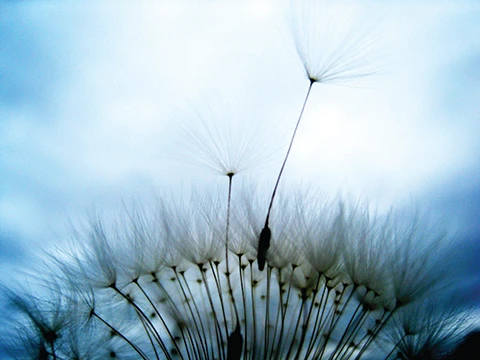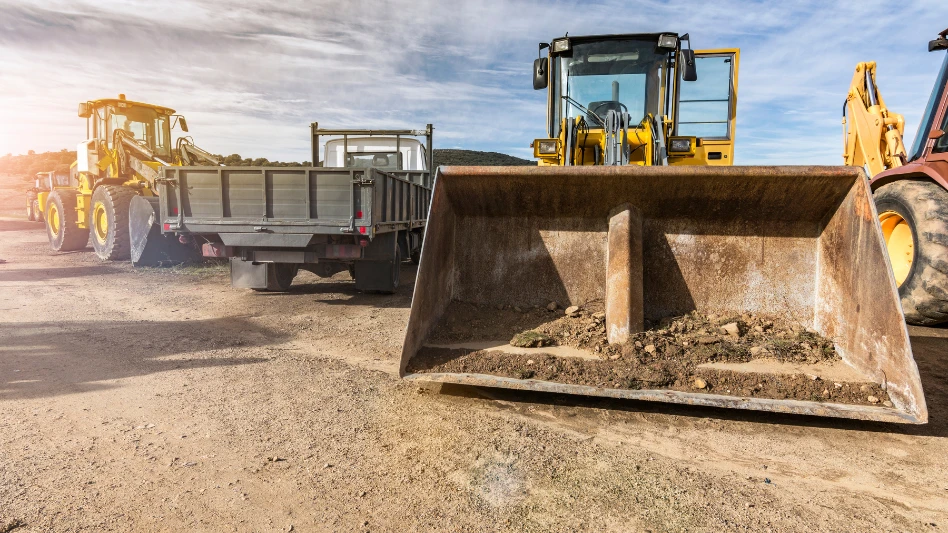
 Weeds are generally not top of mind after you ring in the New Year, especially with cooler temperatures and snow cover in some parts of the country. Up north, turf disease is often pushed to the back burner while snow removal services take precedence. Across the country, the first months of the calendar year offer a slower pace for green industry businesses (unless you’re plowing, of course).
Weeds are generally not top of mind after you ring in the New Year, especially with cooler temperatures and snow cover in some parts of the country. Up north, turf disease is often pushed to the back burner while snow removal services take precedence. Across the country, the first months of the calendar year offer a slower pace for green industry businesses (unless you’re plowing, of course).
But now is the time to keep weeds and disease on the radar. There’s no real hibernation in landscaping. Weed germination can begin in late January and February in warmer states. Diseases crop up around the same time.
Here is your guide to weed and disease issues for the first quarter of 2015.
Northeast.
Snow cover through April buries turf and ornamentals, and delays weeds that wait until the white stuff melts to make an appearance. Spring can come as early as mid-March, or not set in until May – and even then, temperatures can stay quite cool. Still, there is disease and weed pressure that LCOs should mind during this first quarter, and especially in April.
• Red thread: This is the first disease LCOs will spot in northeast lawns, and it can occur any time the weather is cool and wet, says M. Bess Dicklow, extension plant pathology specialist at University of Massachusetts. Ryegrass and fescues are most susceptible to red thread, and it generally occurs in poorly fertilized areas.
Symptoms include an irregular thinning of the lawn, resulting in inconsistent turf depth. “You can see the ‘red threads,’ which are actually the survival structures, with the naked eye,” Dicklow says. If red thread is pervasive, you’ll notice a pinkish path in the lawn.
“What happens is when conditions get dry, the red threads dry out and become brittle and fall into the thatch where they stay until conditions are favorable for them to become active again,” Dicklow says.
 Prevent red thread with adequate fertility and determine proper nutrient levels by conducting a soil test. The ideal soil pH for turf is between 6 and 6.5, Dicklow says. “For every disease, water deeply and frequently, which means applying a lot of water once a week and not turning on your irrigation system every day and sprinkling the grass because that just encourages these fungi.”
Prevent red thread with adequate fertility and determine proper nutrient levels by conducting a soil test. The ideal soil pH for turf is between 6 and 6.5, Dicklow says. “For every disease, water deeply and frequently, which means applying a lot of water once a week and not turning on your irrigation system every day and sprinkling the grass because that just encourages these fungi.”
Prevent future outbreaks of red thread by collecting mowed grass clippings, and do not pile clippings on the turf. Pruning trees may be necessary to allow more sunlight to reach turf, which lessens the cool, moist environment that diseases love. “For red thread, we generally do not recommend using fungicide,” Dicklow says.
• (1) Gray snow mold: This common northern turf disease requires snow to develop and its symptoms are brown, matted grass that tends to have a gray tinge to it. “There are sclerotia present that can be seen with the naked eye and look like peppercorns or mustard seeds,” says Dicklow.
The best snow mold preventive control happens in fall by avoiding excess fertilization. Dicklow recommends making the last nitrogen application six week before dormancy. And keep mowing as long as the grass is growing. Also, a fungicide application before the snow flies will help prevent the fungal disease.
During winter, avoid snow piles on the lawn if possible. “If you can at least spread out the snow, the area can warm up and dry out in the sunshine,” Dicklow says. “The drier weather will stop these fungi from growing.” As for treating gray snow mold, warm and drier days tend to do the trick. And, gray snow mold is rarely a long-term threat to a lawn. Come snow melt, improve drainage on the property if that is an issue. “Rake out the lawn and if the grass does not come back (in affected areas) then reseed and lightly fertilize,” Dicklow says.
• Pink snow mold: Pink snow mold is active under snow cover and any time the weather is cool and wet. “Symptoms are more circular patches, and sometimes when the lawn is wet you’ll see a pink mycelium,” Dicklow says. Pink snow mold, if left untreated, can kill off turf.
The same preventive rules as gray snow mold apply here. “Pink and gray snow mold can occur together, and often do,” Dicklow says.
• (2) Crabgrass: Early spring is not too soon to begin thinking about a crabgrass prevention strategy for summer. Once temperatures hit a steady 55 degrees, pre-emergent herbicides can be applied to turf and ornamentals. Refreshing beds with mulch in early spring will prevent weeds, including crabgrass, from cropping up. And in the lawn, adopting good turf cultural practices will go a long way toward preventing this grassy weed when the weather warms up for good.
“Proper mowing, fertilization, soil pH correction and proper irrigation all contribute to the production of a healthy and dense turf that has the ability to compete against crabgrass and other weeds in the turf,” says Randall Prostak, University of Massachusetts Extension weed specialist.
• Perennial weeds: The usual suspects are weeds like quackgrass, orchard grass (in ornamental beds) and fine fescues that can green up early. Spot-treat these with a glyphosate-based product, Prostak says, suggesting that LCOs consult their product distributors to source the correct formula.
• (3) Winter annual weeds: Winter annual weeds germinate in the fall and winter, and sprout in early spring. Some common weeds are henbit, chickweed, deadnettle, annual bluegrass and wild mustards. “I call winter annuals the forgotten lifecycle because in the fall, people are praying for the end – and there are weeds there, but at that point it’s time for fall cleanup and fertilization,” Prostak says. Sometimes that post-emergent application is ignored.
As long as a lawn is actively growing – as late March in this region – a broadleaf post-emergent herbicide application can help knock out those winter annuals. “If the weeds are in landscape beds and very small, they can be smothered with mulch,” Prostak says. Sizeable weeds should be spot-treated with a glyphosate.
Southeast/South.
With warm- and cool-season grass varieties in this region, some lawns might be battling weed and disease while others (namely tall fescue) are looking their best January through March. “You may have some brown patch pop up (in tall fescue), but I wouldn’t consider that a major disease problem at that time of the year,” says Clint Waltz, turfgrass specialist at University of Georgia.
Tall fescue might respond to a few consecutive days of cold, cloud-covered weather by turning a bit brown. “But that’s a cold injury response and not a disease issue, and all it takes is a change in environmental conditions for the tall fescue to bounce back,” Waltz says.
 On the other hand, southeast LCOs should keep these weeds and diseases on their radar:
On the other hand, southeast LCOs should keep these weeds and diseases on their radar:
• (4) Spring dead spot: As its name implies, you’ll notice spring dead spot by its 12- to 16-inch diameter spots of dead turf. Because this fungus is best prevented in fall, first-quarter treatments mainly prevent the spread of the disease, Waltz says. He recommends a fungicide application on the spot once the grass greens up.
• Large patch: Large patch appears as blighted, dead or dying grass in area up to 10 feet in diameter. This disease is especially common in centipede and St. Augustine grasses as they transition into active growth in early or mid-April, Waltz says. Especially if a site has a history of large patch, April is the time for a fungicide application.
“Early spring application of a fungicide can help prevent the disease and transition the grass better or more easily, since we don’t have as much turf loss (from the disease) in the spring.”
• (5) Winter annual broadleaf weeds: In late January and early February, henbit, chickweed, dandelion and Carolina geranium crop up. “Catch these weeds early in the year when they are small by controlling them with a three-way herbicide,” Waltz says. Once March sets in and temperatures rise, these weeds grow quickly and are more challenging to control.
“Post-emergent applications in January and February will serve you well moving into the middle and latter part of spring,” Waltz says. LCOs should scout properties in mid and late January – Waltz recommends “boots on the ground” – to identify weeds before they get out of control.
• (6) Annual bluegrass: This winter grassy weed is tough to control in tall fescue grass. “You have a cool-season grassy weed with a cool-season desirable turf,” Waltz says. The fine-leaf grass puts out seed heads in January and February. “Once we get past the middle of February, it’s hard to control,” he says, relating that there are no real effective control options in tall fescue.
“In warm-season grasses, you have some options,” Waltz says. “If you catch annual bluegrass before [its diameter] is the size of a quarter, you can apply atrazine in centipede and St. Augustine lawns, and in dormant zoysia and Bermuda grass.”
• American burnweed: When developers stopped working on acres of cleared lots that were slated to be housing subdivisions, invasive weeds took over the neglected properties. American burnweed, a summer broadleaf weed that germinates in the spring and can grow up to 8 feet tall, became pervasive. Its seed heads were carried by wind to surrounding properties, and now LCOs need to keep an eye out for this weed in home and commercial lawns, Waltz says.
For lawns in developments with vacant lots or where these weeds are present, it would be wise to put town an herbicide application of isoxaben,” Waltz says.
Midwest.
Northern states in the Midwest region may better relate to weed and disease pressures experienced to the Northeast, while closer to the transition zone in Kansas, spring’s “entrance” can vary up to six weeks and has a significant impact on what turf and ornamental issues LCOs will experience.
Here are some issues to keep on the radar:
• Winter annual broadleaf weeds: During the first quarter, warm-season turfgrass can use a “winter weed cleanup” with a non-selective glyphosate – it’s safe because the grass is dormant, says Jared Hoyle, extension turfgrass specialist at Kansas State Research and Extension.
• Crabgrass: Now is the time to think about applying a pre-emergent herbicide to prevent crabgrass, Hoyle says. “A good rule of thumb for crabgrass application is around April 15,” he says, noting that an average 55-degree temperature is ideal. “By May, crabgrass germinates."
• Dandelion: Catch them pre- or post-bloom. Research conducted at Kansas State University showed that timing is critical when using broadleaf herbicide to control dandelion. “You definitely want to avoid a peak-bloom application,” Hoyle says, explaining that the bloom essentially sucks up the product, leaving its stem and roots virtually untreated. “You won’t get as effective control during this time.”
West.
Weeds and disease are less of an issue in the arid West and southern California than drought. Lack of water drives turf and plants into stress mode, says James Baird, turfgrass specialist at University of California Riverside. “It has been so dry here that disease has not been a problem,” he says. Weeds are another story. “With more restrictions on watering, weed pressure is going to be at a premium.”
• Crabgrass: What’s important to note out West is the earlier timeframes for applying pre-emergent herbicides, Baird says. January and February are prime times for spreading a crabgrass preventive and controlling summer annual weeds.
• Summer annual weeds: “We have so many species that seem to be localized, and even what we see one year may not be present another year,” Baird says. Pre-emergent applications are important, and now’s the time he says.
• Pink snow mold: Some northwest areas can face pink snow mold, which technically doesn’t require snow to appear. Cool, wet temperatures cause the fungal disease to form in turfgrass, and the turf health generally improves with warmer temperatures and sunlight.

Explore the January 2015 Issue
Check out more from this issue and find your next story to read.
Latest from Lawn & Landscape
- Analysis of an entrepreneur
- Terra Nova's Sedum Conga Line variety wins Best of 2024 Perennial award
- Different ways to distribute
- Case's 580EV electric backhoe loader wins Good Design Award
- Davey Tree promotes Dan Herms to VP, GM of Davey Institute
- Caterpillar's Cheryl H. Johnson set for April retirement
- Registration open for sixth annual Lawn & Landscape Technology Conference
- 12 interview questions to help you hire winners





